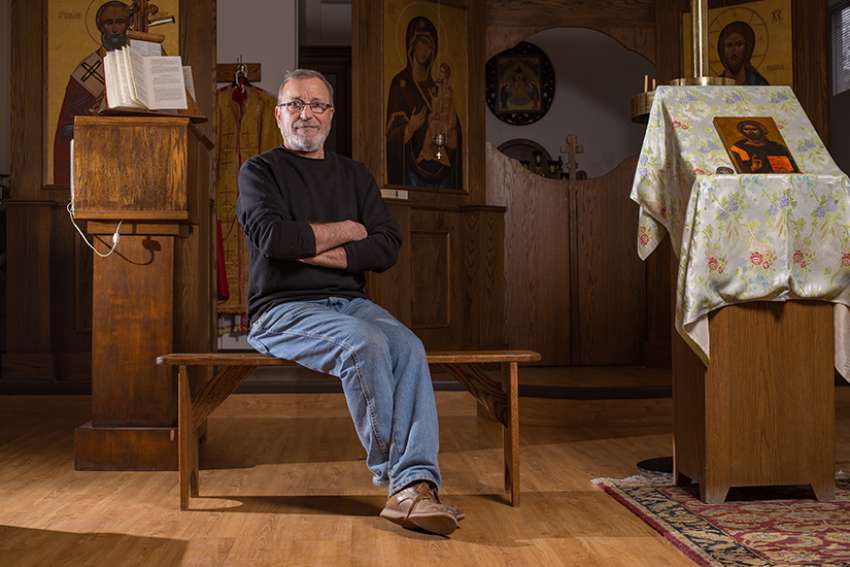But the next question has to be that Bee Gees query, “How deep is your love?”
Eleven women gathered at the Sheptytsky Institute on the campus of Toronto’s University of St. Michael’s College late in February to deepen their love over the course of a week spent painting a single, small icon of Christ or of Mary.
Under the instruction of master iconographer and art restorer Roumen Kirinkov, these women learned to mix dry pigments and yolk emulsions, apply glazes, stretch canvas, mix and apply gesso, handle gold leaf, mix colours, choose and handle brushes. But first they prayed.
“Before starting work, make the sign of the cross; pray in silence and pardon your enemies,” is the first of nine traditional rules for writing an icon.
Icons are most commonly associated with the Byzantine Orthodox churches, but in fact are central to the prayer and culture of all the churches of the East. It is the oldest artistic tradition in Christianity and has become increasingly important to many Roman Catholics.
Iconographers commonly talk about writing rather than painting an icon because they want to distinguish what they are doing from entertainment. A pretty picture can be excellent, even worthy, distraction. But an icon is something akin to Scripture, emerging from and encompassing a tradition that connects the viewer both to the saint or holy figure depicted, but also to the Church.
![]()
Louise St. Germain, a graduate student in Eastern Christian theology at Saint Paul University in Ottawa, was born Roman Catholic but fell in love with the Eastern tradition a few years ago. Trying her hand at icon writing was a logical next step for her.
“Art, especially this type of art, forces you to slow down. It’s almost an experience of lectio divina. Everything is so slow.”
Oriana Bertucci, director of student life at St. Michael’s College, said the week-long course was something from her “bucket list.”
“They told me you didn’t need experience. It’s more about prayer,” she said.
![]()
![]()
The week of slowly building up layers of paint on small, canvas-covered wooden plaques was intensely religious, with prayers and hymns spread throughout the day.
Kirinkov doesn’t give the course often. There isn’t that much demand. He puts his emphasis on the technical skills and craft necessary to produce a good result. It’s the intense concentration, the singular focus on the image, that produces the prayer — not the other way around.
You can’t pray an icon into existence. You paint it. But the slow, methodical process can only happen at the meeting point of body and soul.
Kirinkov warns his students not to be so serious. A little joy helps.
“Fill my soul with joy and gladness, for Thou alone art the Lover of mankind,” reads the traditional prayer on completing an icon.


